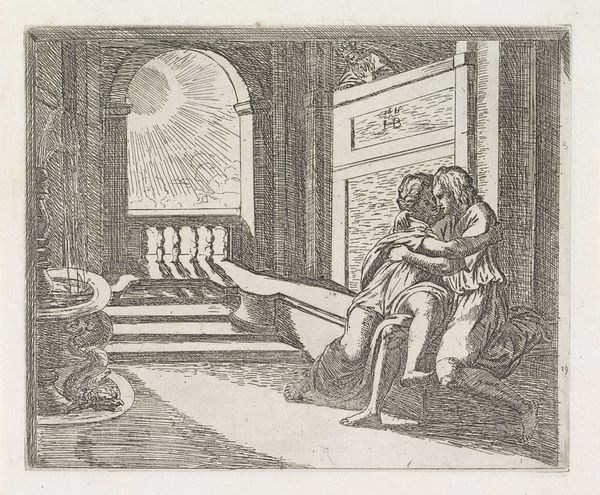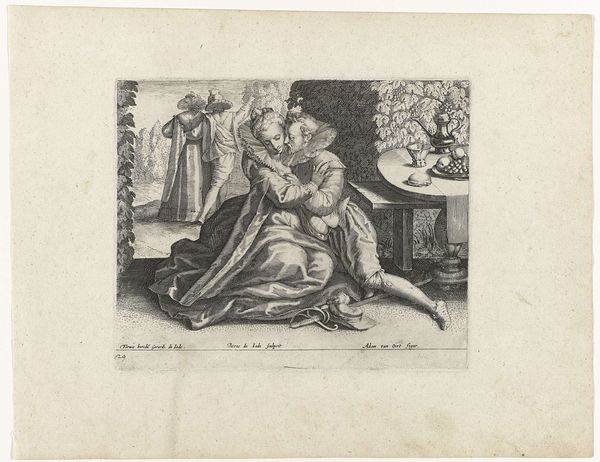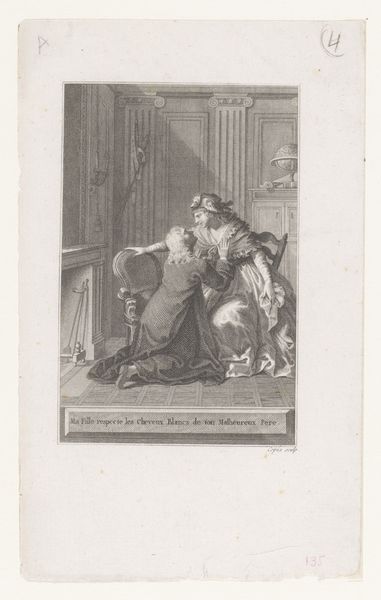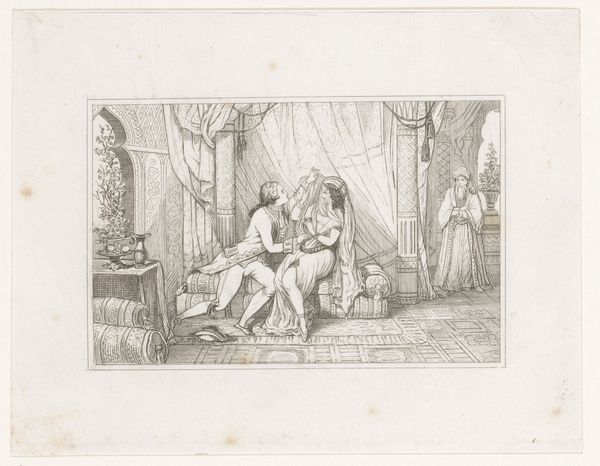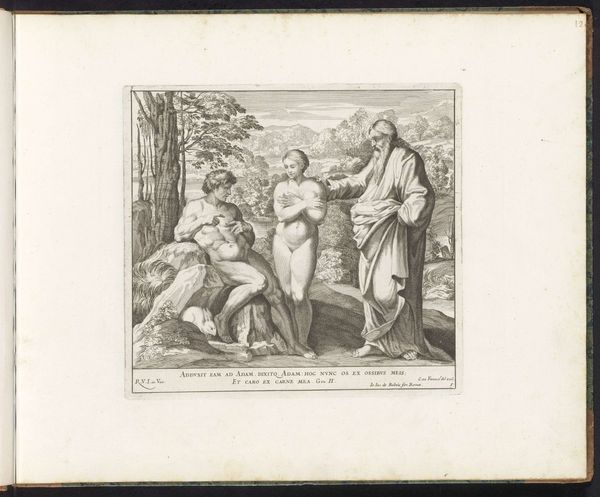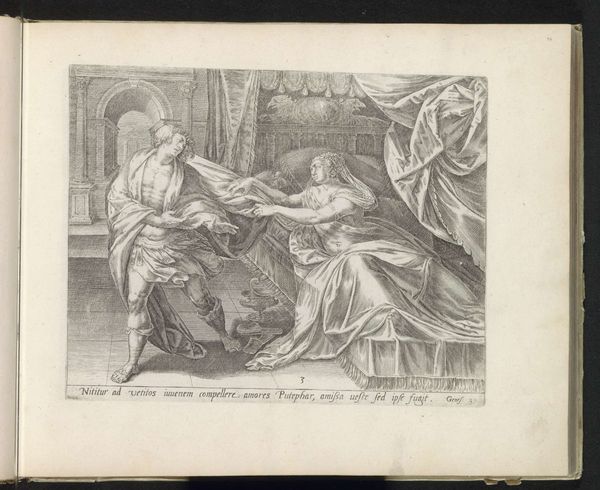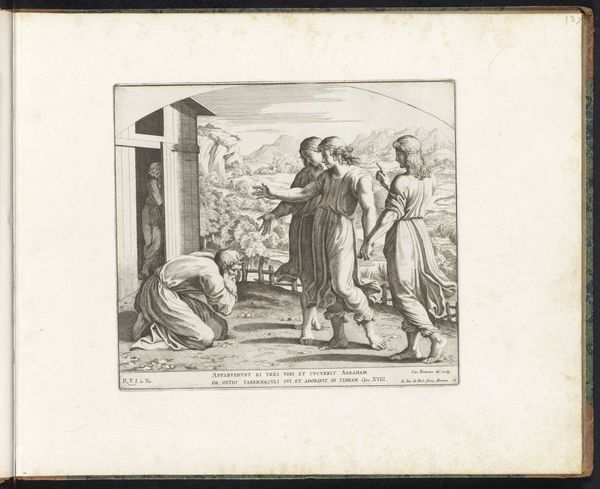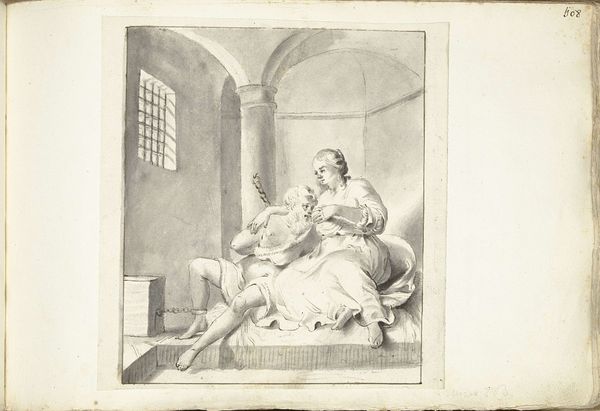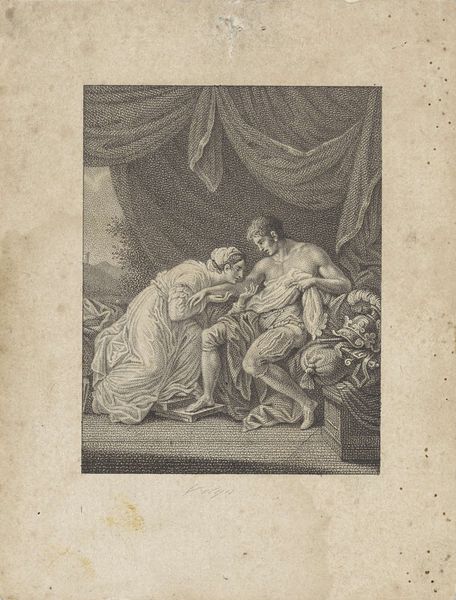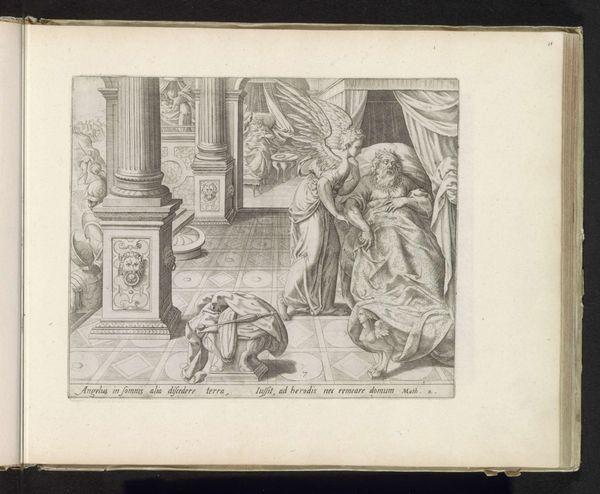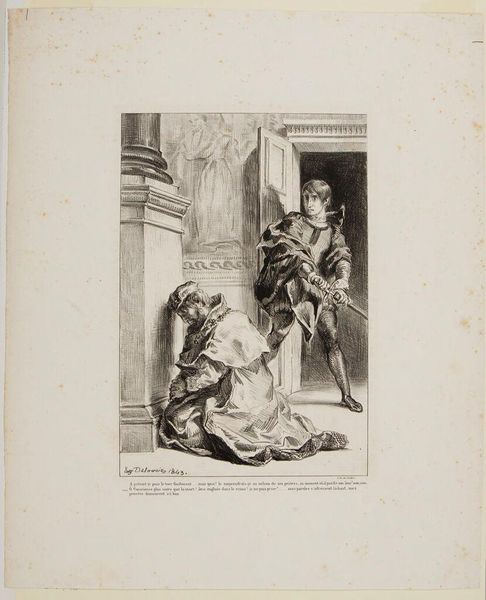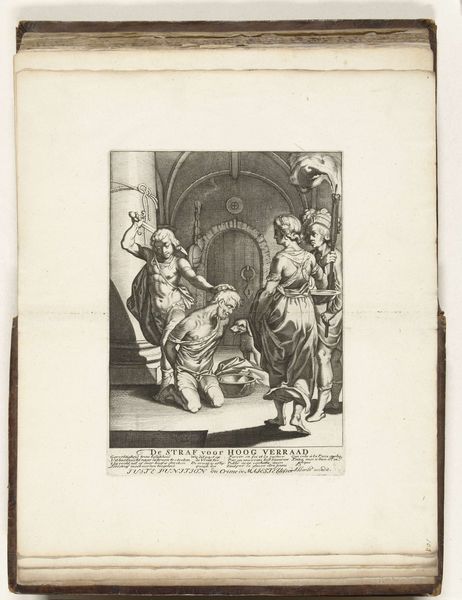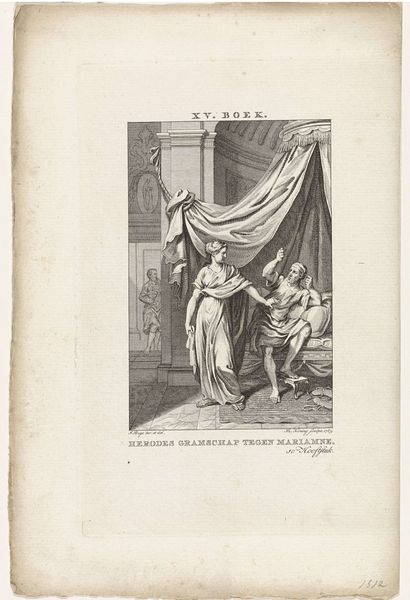
print, engraving
#
baroque
# print
#
figuration
#
history-painting
#
engraving
Dimensions: height 243 mm, width 268 mm
Copyright: Rijks Museum: Open Domain
Curator: What we have here is an engraving dating back to 1675 by Cesare Fantetti titled “Abimelech ziet Isaak Rebekka liefkozen.” It depicts a scene with Isaac and Rebekah, subjects from the Hebrew Bible. Editor: It’s intimate, and shadowed. A kind of stolen moment depicted in an otherwise grand setting. There’s something furtive about the embracing couple and also the spying figures looking from above, peering from what seems to be a window box. Curator: Yes, the piece captures a key moment where Abimelech observes Isaac and Rebekah's affection, realizing they are indeed husband and wife. It’s part of a larger narrative of deception and revelation. Symbolically, the embrace itself in art often denotes not just love, but truth coming to light. Editor: Interesting point about the truth, especially when looking at the figures that are observing the scene, which could also be about the performance of gender, as if it wasn't really clear they were married because Isaac and Rebekah did not publicly embrace. Curator: Right. The surrounding Baroque architecture lends a dramatic and somewhat theatrical quality. Consider how Baroque art, particularly in prints like this, used dramatic light and shadow—chiaroscuro—to emphasize emotion. That arched balcony behind them and that glowing light amplifies the intensity. Fantetti likely meant to draw the viewer into the charged, historical narrative. Editor: This is where the narrative gains traction; these visual elements of theater and intensity draw one's eyes to how such intimate relations are viewed differently through varying cultural lenses. Here, something innocent and accepted in many societies requires one figure to obscure truth as opposed to freely embrace what has come to be. Curator: Well put. The politics of intimacy, you might say, even in such a biblically-derived artwork, underscores the social context. Fantetti provides both a visual story but layers it with meaning derived from historical and social perspective that may give one a chance to contemplate where acceptance becomes an act of obscuring facts. Editor: Thinking about its public reception when it was created, and even now, it sparks thoughts around the different shades between cultural values, performance and societal norms.
Comments
No comments
Be the first to comment and join the conversation on the ultimate creative platform.
